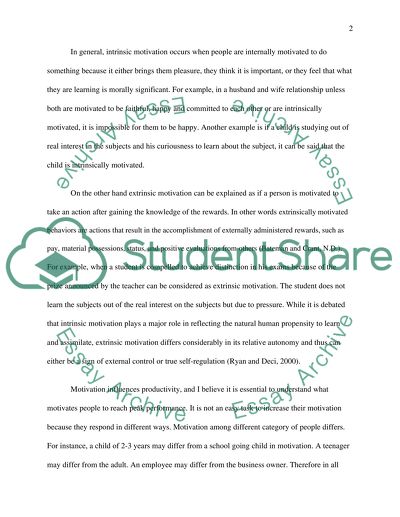Cite this document
(Intrinsic and Extrinsic Motivation Essay Example | Topics and Well Written Essays - 1682 words, n.d.)
Intrinsic and Extrinsic Motivation Essay Example | Topics and Well Written Essays - 1682 words. Retrieved from https://studentshare.org/psychology/1505165-intrinsic-and-extrinsic-motivation
Intrinsic and Extrinsic Motivation Essay Example | Topics and Well Written Essays - 1682 words. Retrieved from https://studentshare.org/psychology/1505165-intrinsic-and-extrinsic-motivation
(Intrinsic and Extrinsic Motivation Essay Example | Topics and Well Written Essays - 1682 Words)
Intrinsic and Extrinsic Motivation Essay Example | Topics and Well Written Essays - 1682 Words. https://studentshare.org/psychology/1505165-intrinsic-and-extrinsic-motivation.
Intrinsic and Extrinsic Motivation Essay Example | Topics and Well Written Essays - 1682 Words. https://studentshare.org/psychology/1505165-intrinsic-and-extrinsic-motivation.
“Intrinsic and Extrinsic Motivation Essay Example | Topics and Well Written Essays - 1682 Words”, n.d. https://studentshare.org/psychology/1505165-intrinsic-and-extrinsic-motivation.


